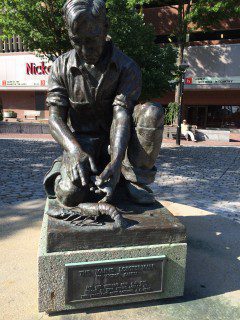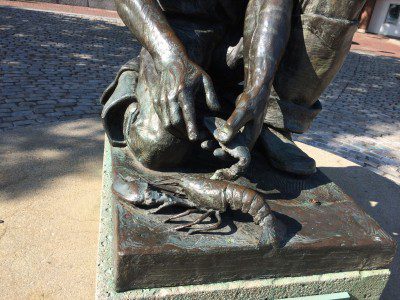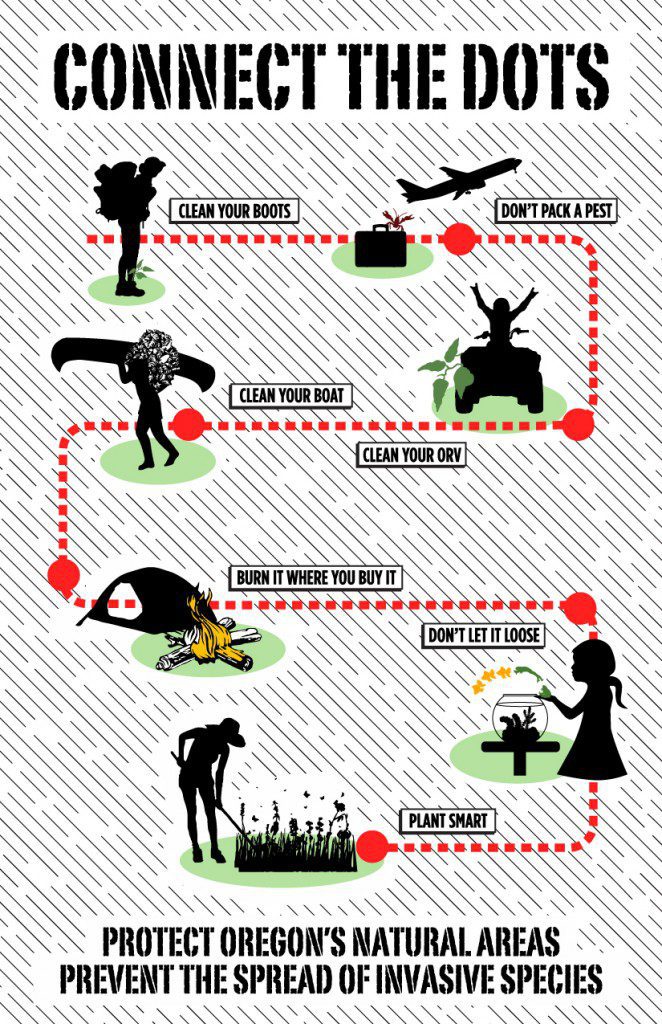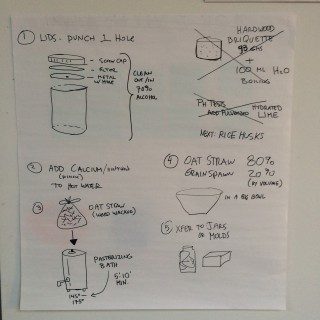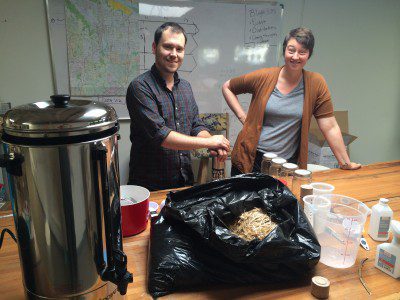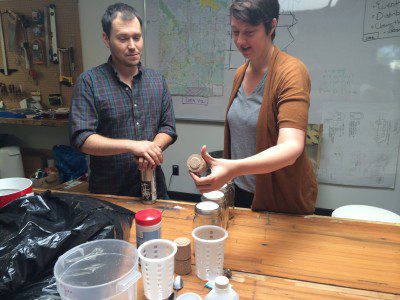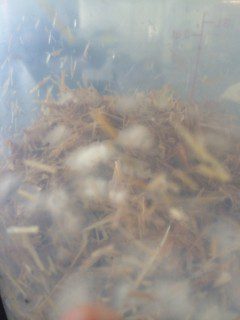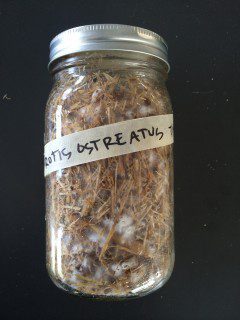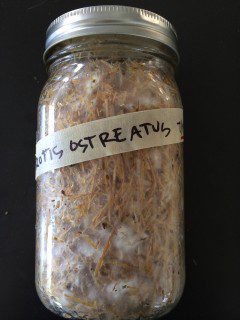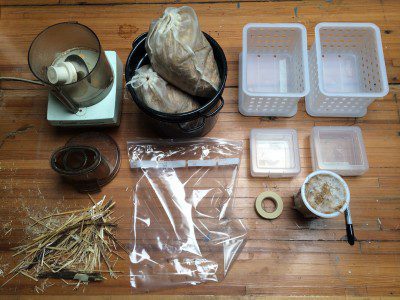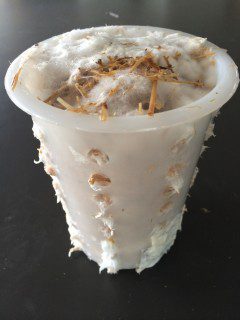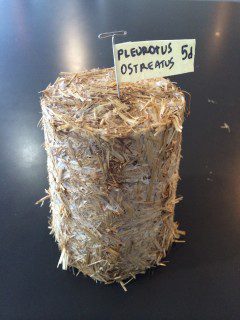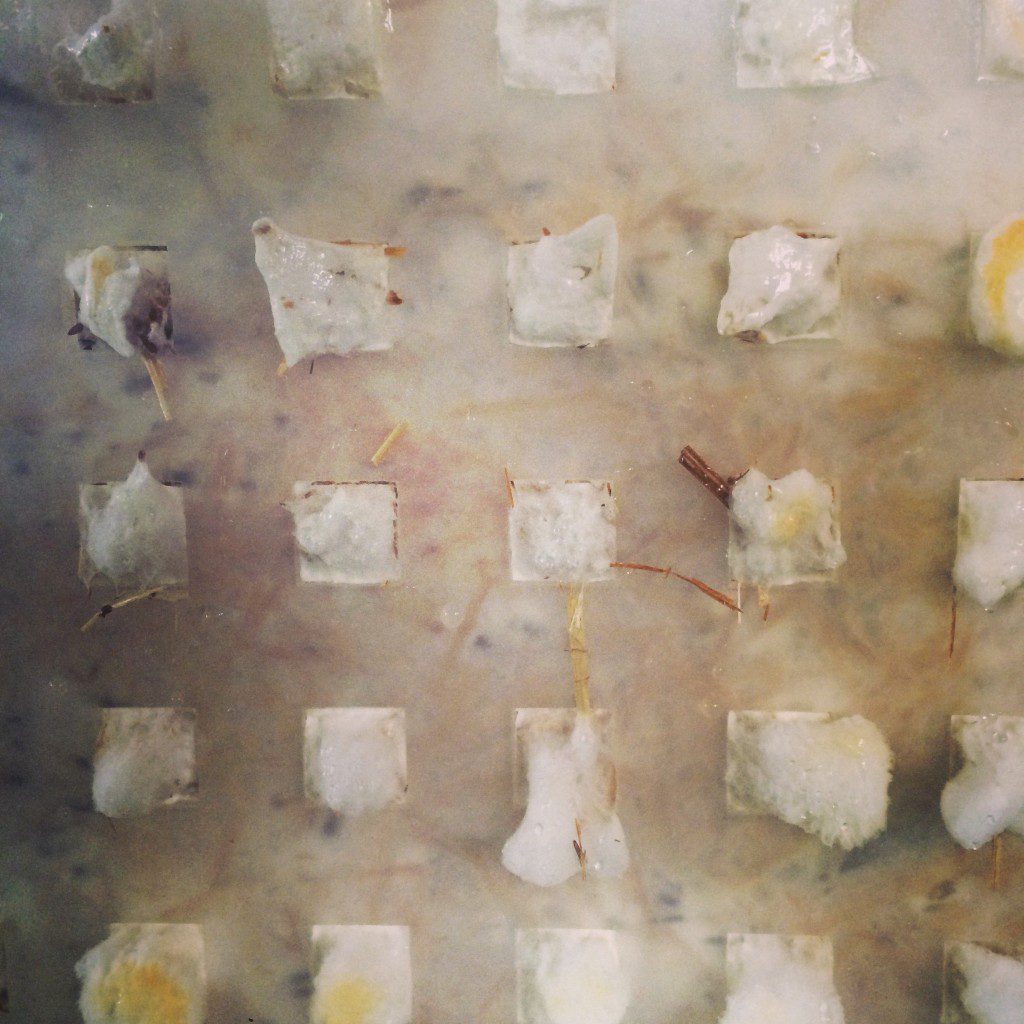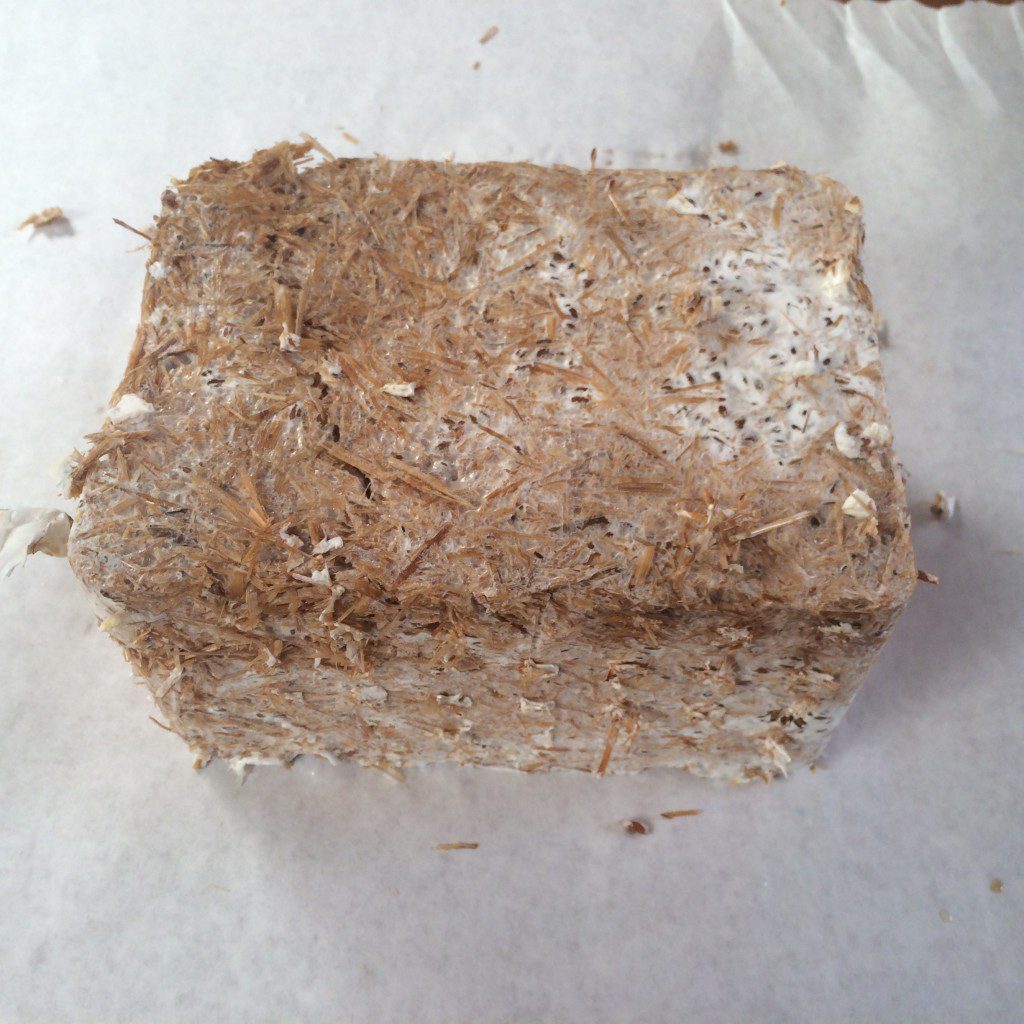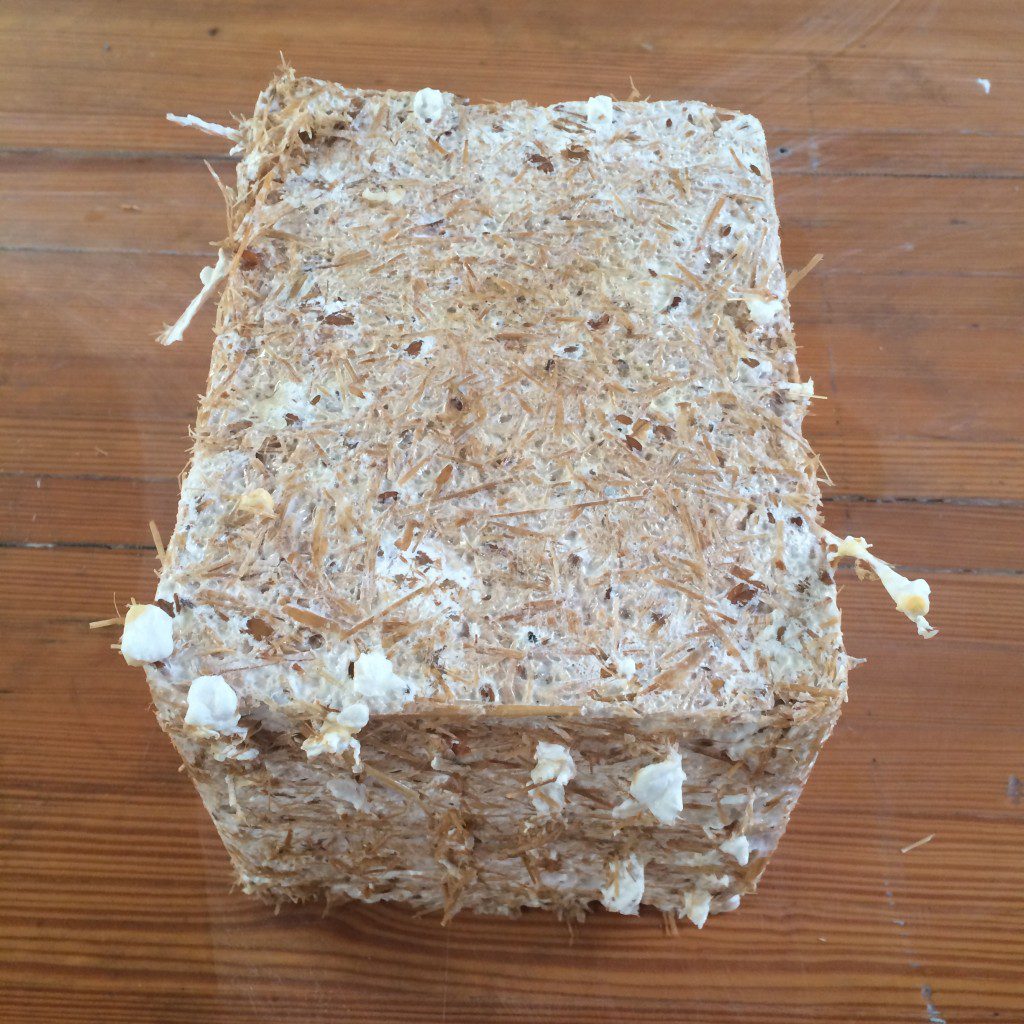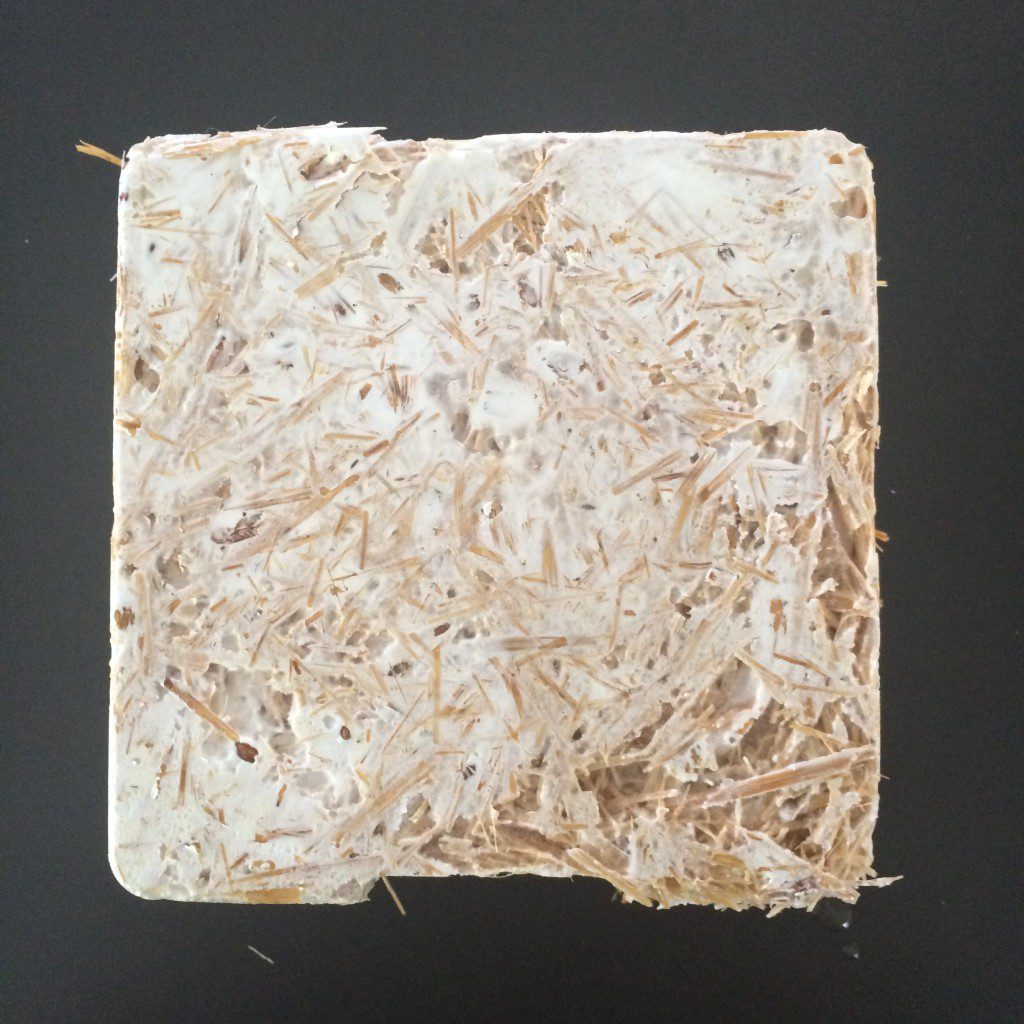Research Journal
-
September 15, 2014
Trash Considered
Tags:I adopted some trash cans at the new Creative Capital offices, to help them raise money. This entitled my supported objects to some plaques. Here they are:
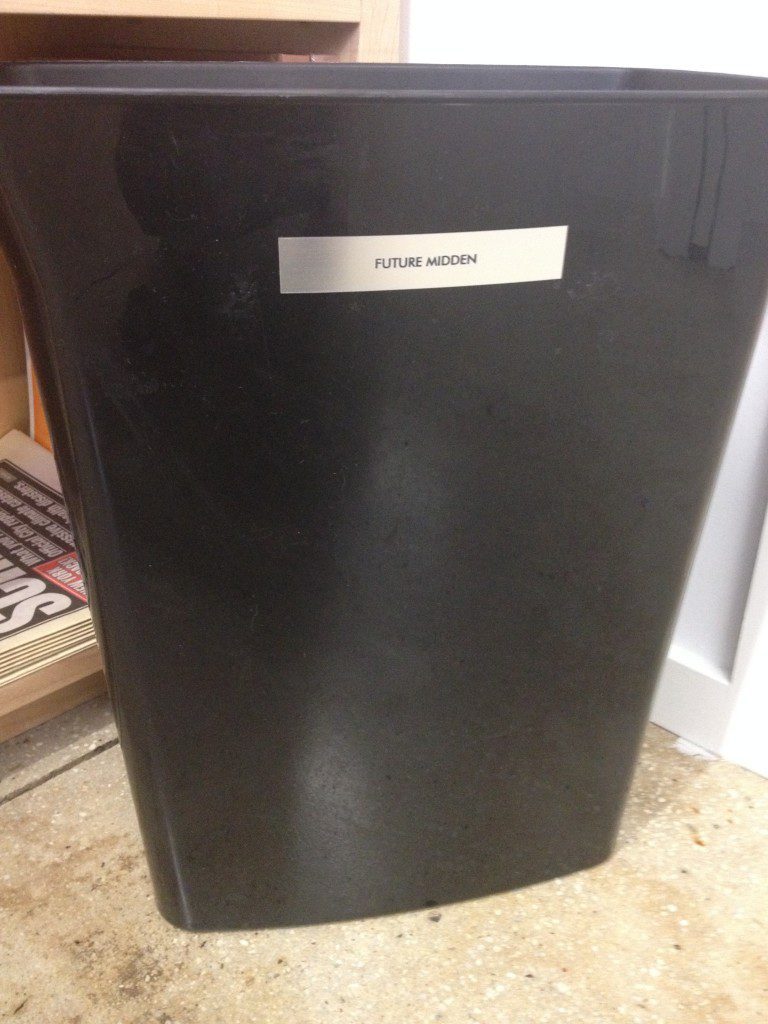

-
-
-
August 21, 2014
forgotten space / the sea as non-space
I hadn’t quite connected big box stores to container ships, and the idea of non-space and non-place, til i came across this still.
Marc Augé writes about non-place in his eponymous book on Supermodernity , and Robert Smithson of course said it first (“non-site, the gallery as a kind of blank):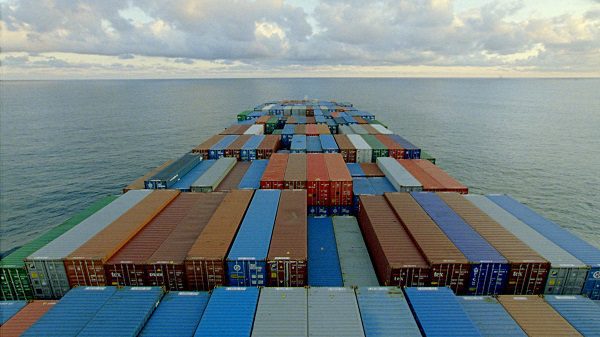
Allan Sekula and Noël Burch, still from The Forgotten Space (2010) which is from the movie The Forgotten Space, whose promo text reads:
The Forgotten Space follows container cargo aboard ships, barges, trains and trucks, listening to workers, engineers, planners, politicians, and those marginalized by the global transport system. We visit displaced farmers and villagers in Holland and Belgium, underpaid truck drivers in Los Angeles, seafarers aboard mega-ships shuttling between Asia and Europe, and factory workers in China, whose low wages are the fragile key to the whole puzzle. And in Bilbao, we discover the most sophisticated expression of the belief that the maritime economy, and the sea itself, is somehow obsolete.
From Smithson’s writings:
Oblivion to me is a state when you’re not conscious of the time or space you are in. You’re oblivious to its limitations. Places without meaning, a kind of absent or pointless vanishing point.
Instead of putting something on the landscape, I decided it would be interesting to transfer the land indoors, to the Non-site, which is an abstract container.
http://socks-studio.com/2014/06/14/theory-of-non-sites-by-robert-smithson-1968/
http://interventions-arthouse.blogspot.fr/2011/11/robert-smithson-mapping-and-concept-of.html
Allan Sekula and Noël Burch, still from The Forgotten Space (2010) -
August 10, 2014
Floating Studios for Dark Ecologies – personal notes
I have been struggling (again) with ways to succinctly describe what I am up to in Portland. I’ve had over 40 meetings since June 1, engaged with (taken the time of) a host of generous people, and what I’ve come away with is that the project is perceived alternately as:
Really exciting | How can I participate? | Too science-y | Too arty | Too esoteric | Too pro-industry | How can you help me?
So I’m trying to work it out in a semi-public way on this blog, and therefore trying to be responsible for my language, and to provide some context for these thoughts.
Comments always welcome.
Back to definitions.
Environmental awareness is, finally, a sense of irony, because it is through irony that we realize that we might be wrong, that identity might not be as solid as we think, that our own gaze might be the evil that we see.”
– Timothy Morton, Thinking Ecology: The Mesh, the Strange Stranger, and the Beautiful Soul (2010) http://www.urbanomic.com/pub_collapse6.php
I asked Tim Morton for a succinct definition of “dark ecology.” While not brief, it’s full of guideposts:
There are parts of dark ecology that I’ll need to tease out here before I give you the telegraphic definition.
1. Depressing. Melancholy. Ecological awareness is depressing (suffering etc.) and also ontologically depressing, because I’m literally pressed from all sides (including the inside) by other beings
2. Mysterious. When you start to look, ecological awareness requires that distinctions become blurred but not dissolved: life-nonlife, sentient-nonsentient, intelligent-nonintelligent, conscious-nonconscious, existing-nonexistent. etc etc To be a thing is to be a mystery.
3. Uncanny. (a) Ecological awareness takes a noir form. You realize you are implicated. The tools you use to realize this (global technological devices) are also implicated in the very thing you are realizing. (b) It’s like knowing something unconscious about yourself, which is impossible–kind of glimpsing it sidelong. You don’t mean to harm earth when you turn your ignition key. And you’re not–it’s statistically meaningless. But at Earth magnitude (billions of key turnings) this is exactly what happens. The difference between me (Tim, little me) and this member of homo sapiens (species me). The latter is a hyperobject, not just an abstract concept.
When you put these together you get this nifty sentence: Ecological awareness has a loop form, because ecological beings have a loop form, because things in general have a loop form.
Through ecological awareness you realize that things just are what they are, but are ever so slightly different from what they are, all the time. The reaction to this takes many forms. There is a hierarchy of them, which you can imagine as moving from the outer brittle layers of a chocolate to its inner, sweet layer:
Guilt
Shame
Horror
Ridicule
Melancholia
Sadness
Longing
JoyAt first, dark ecology seems like a tragedy. Our attempt to escape the web of fate IS the web of fate. But in the end (in some ecological future to come), dark ecology is funny, in a sweet, nonviolent and outrageous way.
– Timothy Morton (personal correspondence)
I am struck by guilt and shame as a space that can really inform both the draw to the abject “post-Amercian (Rebecca Solnit) landscapes, and a way to unpack this anti-aesthetic. In the end, I’m going to conclude that while we can’t live without the rules of aesthetics (which are malleable, and bumpy in time), we need to be very awake to how they operate as instruments of power (see the hatred/ perceived danger of neo-environmentalists like Peter Kareiva or Emma Marris and the Breakthrough Institute, for instance, as undoing a lot of environmental work that’s been done in the last three decades). I think guilt and shame need some proper psychiatric treatment, in public, in groups. Superfund site exploration as group therapy.
So I tried to rewrite this project description anew:
FSDE is an art/science lab for hands-on creative inquiry into the Dark Ecologies of urban Nature. ArtScience Resident Experts and Amateurs (AREA heads) design and guide participatory field trips, workshops and discussions that mix citizen science, civic engagement, and artistic output in experimental, open-ended ways, in order to intimately experience problematic landscapes and their agents. Often this means coming close to the discomforts and realities of urban spaces that have industrial legacies. While the Superfund megasites of North Portland may provide a spectacular example of this sort of landscape, your own backyard may be a miniature brown field, and this is precisely the point: to connect, awaken and charge citizens with a thirst for knowledge and the tools and connections to do something.
FSDE is also interested in a shift of the imagination (a “nudge,” thank you, Una Chaudhuri). This is work we began in Dear Climate, which asks: what is inner climate, and what would that change look like? As we face more uncertainty, can we move to a generosity rather than a scarcity model that extends to species beyond the human? And can we appreciate the porosity – the blur – between self and other? Can we move beyond empathy, and cultivate compassion that is not based on similarity Can we embrace the “strange stranger?”
And finally, FSDE aims to allow grief and hope and conflict to exist simultaneously within the bounds of the project.
FSDE wants you to draw your own conclusions, question the given aesthetics and terms that constitute nature/culture, good/bad, ugly/beautiful), and partake in the transformations possible in the landscapes that surround your city. FSDE believes artists, designers, permaculturists, naturalists, and creative citizens of all sorts should not only be invested in/entitled to their surroundings, but could cultivate a robust biophilia, and have a place at policy tables to determine how aesthetics, values, morals and the desires of human AND non human agents can play out in determining urban futures.
Dark ecology’s aims are not to celebrate the dark, or to depress participants. In fact, quite the opposite can occur: there is hope in taking the reins and opening ones eyes. There are small, large and enormous leverage points to be had, with will and organization. And there is beauty and ugliness at work. The point is to not do that online UX quick-swipe “hot or not” move to get rid of the ugly as fast as one can, but to realize that you are not only soaking in it, but without doubt, implicated in its manifestations (which are only artifacts).
The project aims to use art as a tool for social change: nudging our capacity to encounter is the first step toward stewardship. Sometimes this stewardship does not look as clean and pure as the “typical environmentalist” would like (that would require editing out huge swaths of competing realities).
FSDE’s goal is to make a space in which one can be awake. And therefore connected. This is not a logical connectedness, but one of many points, overlaps and conflicts. There needs to be a safe place (in Winnicott’s terms, to be held) where one can explore grief, hope, science, longing, and most importantly, the imagination.
Morton’s second book, The Ecological Thought was discussed by philosopher Levi Bryant thusly:
“Ecology shows us that all beings are connected. The ecological thought is the thinking of interconnectedness. The ecological thought is a thought about ecology, but it’s also a thinking that is ecological… It’s a practice and a process of becoming fully aware of how human beings are connected with other beings– animal, vegetable, or mineral.” – Levi Bryant, The Ecological Thought: A Reply to a Critic
And this is what FSDE aims for: to perform ecology, not just learn about it or support it whilst omitting (at convenience and ad nauseum) one’s complicity in its jaw-dropping, anthropogenic scope.
-
-
August 4, 2014
making mycelium material – some loose protocols
Supplies:
grain spawn (many are fast growing; Pleurotus (oyster muchroom) is probably the fastest species, and is hardy, in terms of resistance to competition, but it will depend on the density you desire). You can purchase from mycosense, fungi.com, etc. I recommend mycosense because they are a small attentive company, and they are really into this process and work.
100 cup coffeemaker with a thermometer is convenient
but a large canning pot on a stove would donut bags (or other mesh bags) to pasteurize substrate (easy to squeeze water out)
a press to squeeze substrate would be nice, esp if you are making a lot of it
substrate: coffee chaff, oat straw, rice husks – depends on texture you want
molds to form substrate (I’ve been making test bricks in hinged polyethylene containers)
will need to provide an air holepolyfill or cotton bags to make an air filter fo the hole – keep contaminants out
zip locks (if you are using a very porous mold (i like perforated molds for texture) you will want to place porous mold in a zip lock to keep moisture in
freezer tape and sharpie to label molds
spray bottle with 70% alcohol (should be 70% – you don’t want to kill everything)
paper towels or alcohol wipes
vinyl disposable gloves
Steps:
heat water to 160º
pasteurize substrate for 10-15 minutes
clean all work surfaces and mold interior and exterior with alcohol and dry
wash hands and arms with soap, wear gloves for the next steps:
cool substrate until you can handle it
squeeze all excess water from substrate (you want it moist but not dripping at all)
put air filter into hole in mold
mix grain spawn with substrate; there are 2 ways to do this:
“lasagna” method of layering substrate then spawn, or
premix 1:5 spawn:substrate
either way, the ratio is about 20%, might be less neededpack mold with spawn
keep somewhere between 70º – 80º
(I keep my molds in a loosely closed cardboard box to prevent contaminants drifting in the air or falling from the ceiling)You should have a pretty solid material after 6-12 days
It will look very white and fuzzy
Remove from mold
Dry in open air (it should no longer risk contamination at this point) for 3 days or until dry to touchBake in over at 150• – 200º for 60 minutes to render mycelium inert.
-
July 15, 2014
Inoculation
I’m learning how to grow mycelium materials.
First, a big shout out to Phil Ross for teaching workshops about this process, and for being a pioneer willing to share.
Here are some janky documentation images of my process (with support and help from Jon Salmon of Mycosense and Sara Huston of TLAAG). I’ll get a more orderly post together soon.
Jon Salmon of Mycosense Mushrooms and Sara Huston of TLAAG.
Oat straw, a coffee maker to pasteurize, some 70% alcohol, Pleurotus ostreotis spawn on grainDAY 3:
DAY 5:
Day 7:
Cuisinart to make the oat straw finer didn’t work so well. The plastic containers are molds for brick samples, and in the black pot there’s oat straw in nut milk bags that I pasteurized in a 100 cup coffee pot.
Transferred jar contents to bricks and cylinders.
Got the first cylinder out after 6 days of Pleurotus ostreatus, and it is pretty solid.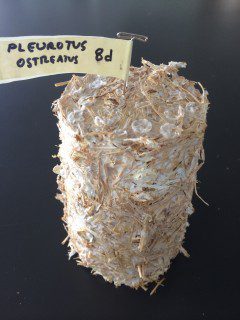

The second cylinder of Pleurotus ostreatus eating oat straw, left in the mold for 8 days
And new substrate /species combos
Coffee chaff with Wood ear (Auricularia auricula-judae)
Oyster (Pleurotus ostreatus)
We doubt that the wood ear will have enough mycelium presence to adhere the material together, but it does grow fast.Jon Salmon!
new bricks: 7/30
new species: ganoderma/reishi:


-
July 15, 2014
Houseboats

View of Swann Island from U of POrtland So… my PDX project’s gone through some shifts in the last 3 weeks.
I lost my design partners, but gained them as consultants! and some great new allies have appeared.
I have a new name for the project, and a framework of a project that suggests a permanent floating studio, less of a sculpture-centric temporary artwork:
Floating Studio for Dark Ecologies (FSDE) is an art/science residency program and public artwork to be sited on a houseboat on the Willamette/Columbia Rivers (Portland, OR). FSDE integrates social practice, craft, and citizen science to address the confluence of social, biological and economic systems connecting climate change and river health.
FSDE residents will investigate the “dark ecology” of North Portland (“green” mecca and home to 11 long-term superfund sites) and examine the science, politics, poetics and pragmatics of the rivers.
At the center of the floating studio is a small chai house fusing curiosity, hospitality, and action. Guests will produce and drink tea mirroring the environment: geology (clay cups), water, plants (chai spices), and black tea (imported from across the Pacific). This intimate ritual connects local and global concerns of climate, citizenship and the ecosystem in order to imagine and shape the rivers’ future.
+++
This means…
get a houseboat
modify, upgrade and customize
rent moorageI met with the sublime and elegant Diane Hall, ED of the Bill Healey Foundation yesterday. She and her sister live on next-dock-neighbor houseboats. I got some tips on what to look for: old growth logs are best. You can really revamp a boat in a big way and even grow trees.
++++
Yesterday I also met with Peter McCoy, the founder of Radical Mycology: he is a force in the remediation world. Open source, DIY, generosity model, passionate, theoretical, speculative, and really knowledgable.
Peter and Oliver Kellhammer will be leading a design charrette with me in PDX at the end of July, on using bio-remediating materials in architecture, art and design.
-
